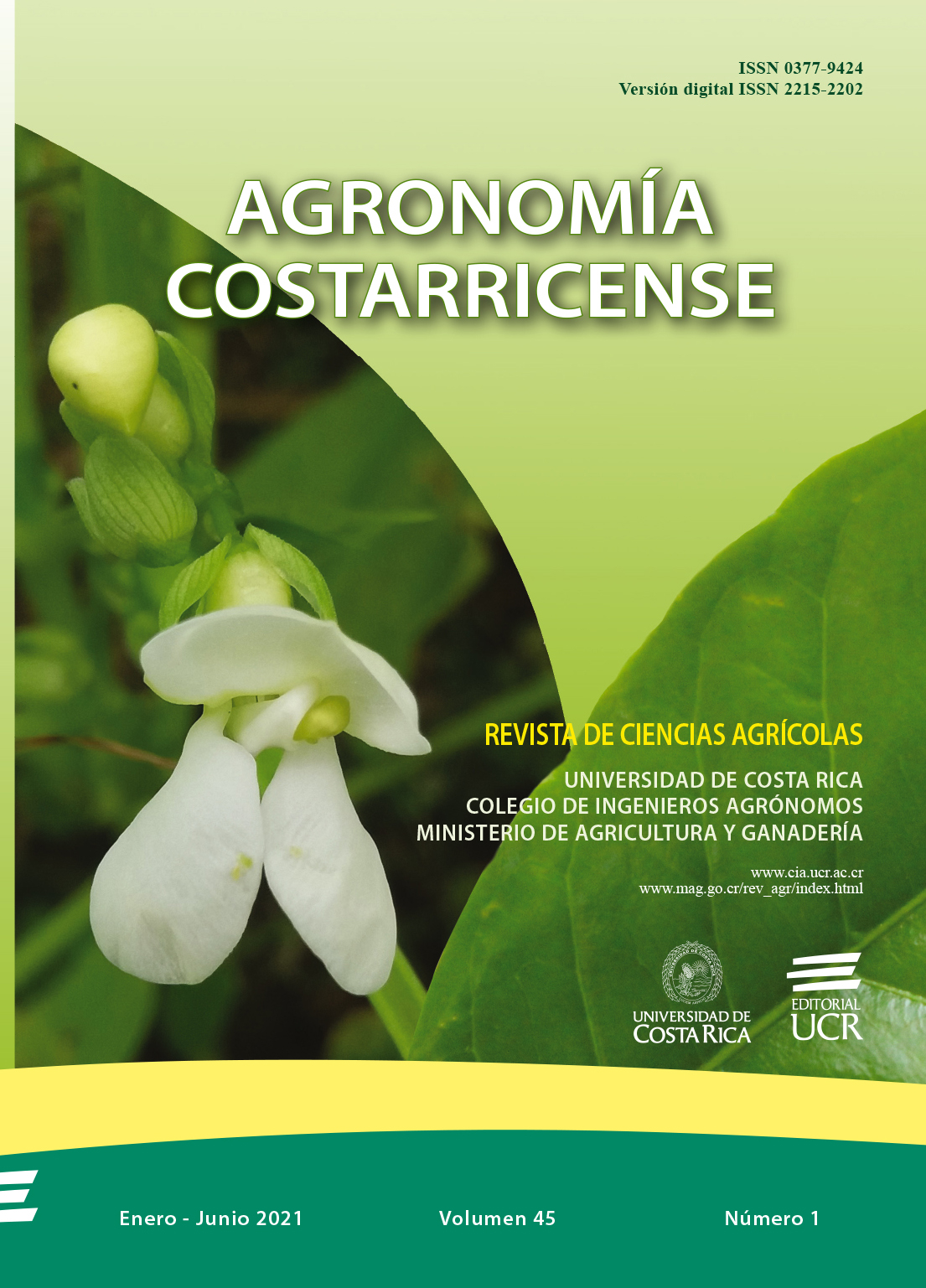Abstract
Introduction. The interaction between genotype, climate and agronomic management practices determines the growth of the crop, and consequently its water and nutritional demand. Objective. The effect of protection and nutrition level on the growth, use of nutrients and evapotranspiration in the hydroponic crop of wild coriander, was evaluated. Materials and methods. A study was conducted in 2016, at the Fabio Baudrit Moreno Agricultural Experimental Station, Alajuela, Costa Rica. It comprised 2 consecutive stages of a growing cycle: I) in dry season protected with saran and II) rainy season covered with plastic. Four treatments were applied that combined 2 environmental conditions: a protected crop (PC) and another without protection (WP); and 2 levels of nutrition: high (HN) and low concentration of nutrients (LN). A randomized block design with a 2 x 2 bifactorial arrangement was used. Dry matter (MS), leaf area index (LAI) and crop growth rate (CGR), extraction, leaching, efficiency recovery (ER), absorption rate (AR) and absorption concentration (AC) of nutrients and crop evapotranspiration (ETc), were evaluated. Results. Under protection, improved ER due to increased growth (DM, LAI, CGR) and absorption and decreased leaching; in addition, AC increased by decreasing ETc. With a high level of nutrition, increased growth, nutrient absorption and AC. However, the high increase in leaching reduced RE. Conclusion. The highest biomass production occurred in protected crops with high nutrition (HN). However, with NA, there was a noticeable increase in leaching that reduced ER. The protection of the crop together with the adjustment of the concentration of nutrients from the CA, allowed to integrate the growth with the consumption of water and nutrients, which improves the ER without sacrificing yield.


